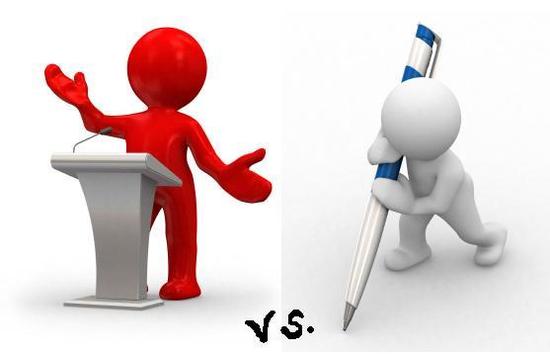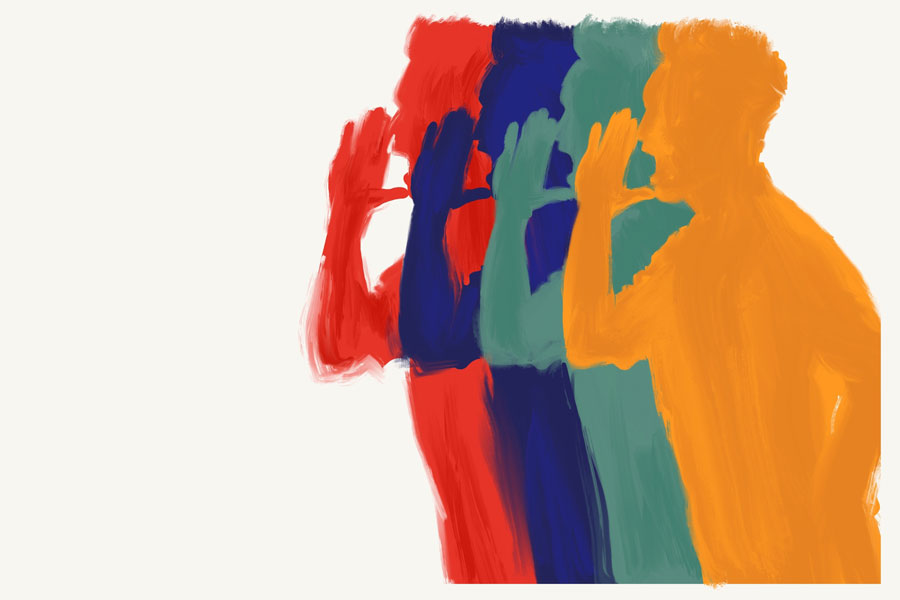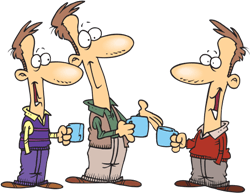VARIETIES OF LANGUAGE
Formal & informal language
Spoken & written language
Dialects- Social & regional
Registers
Idiolects
Formal & informal language
Standard Language
A standard language is a variety of language that is used by governments, in the media, in schools and for international communication.
A recognized dictionary or group of dictionaries which embody a standardized spelling and vocabulary.
A recognized grammar which records the forms rules and structures of the language.
A standard system of pronunciation.
Statues or constitutions giving the language an official legal status.
The use of the language in the work of courts and legislations.
Translations of important text in to that language.
The teaching of grammar and spelling in school.
When we investigated the sounds, words and structures of language in earlier chapters, we were concentrating on the features of only one variety, usually called the standard language. This is actually an idealized variety, but exists for most people as the version that is accepted as the official language of their community or country.
If we think of Standard English, it is the version we believe is found in printed English in newspapers and books is widely used in the mass media and is taught in most schools. It is the variety we normally try to teach to those who want to learn English as a second or foreign language. It is clearly associated with education and broadcasting in public contexts and is more easily described in terms of the written language (i.e. vocabulary, spelling, grammar) than the spoken language.
Spoken & written language
Spoken Discourse
Discourse is a language beyond the sentence level. In other words the patterns of language which is beyond word, phrase, clause or sentence level to communicate.
- Written
- Spoken
Discourse refers to the patterns across the text. Text may be spoken or written.
Discourse Analysis
Refers to analyzing the text beyond the discourse level both spoken and written text.
Why we analyze Discourse?
1. How the use of language influenced by relationship between participants (reader/ writer)
2. To understand the effect of language has upon social identity and social relationship.
Ex- Identity as a lecture Relationship can be equal and unequal.
3. D.A (Discourse Analysis)use to how views of the world different understanding.
Ex- Social culture being expect something from our society/culture/social philosophical believe/ Religious belief (Belief/ views)can be positive or negative.
4. Understanding how views of the world through the use of discourse and language has dynamic interplay, with this regard without language we can‟t create society.
Factors of Social Interaction?
1. Gender
2. Age
3. Social Class
4. Physical condition class/ university / playground
5. Profession relationship
- boss and employer
–two employees
– two collaborative businesses.
6. Social Relationship (Friends/ relations)
7. Our world view
Beliefs – Philosophical beliefs
Views – what we think of the world
attitudes – Positive / negative
8. Social class –
Middle
lower
upper
Ex – caste system in India.
Context or situation
you (ඔයා) – close loving
උඹ , ත ෝ - depend on the text
තී - rude
Ex – Accent represent social class
Difference between spoken and written
Genres of spoken discourse
1. Informal conversations among peers
2. Informal conversations between 2 age groups
Elder – youth
Toddler – parent
3. Teacher talks in a classroom
4. Academic discussions
5. conference presentations
6. political speeches (campaigning)
7. Parliamentary debate
8. Legal submissions
Modes of communication (Oral)
1. One to one
2. One to many
3. Face to face
4. Telephone
5. Online
6.Online Face to face or not.
Related things online communication – close , distant, visible, invisible
According to Michal Halliday we should not see them, written and spoken see them as a continuum. A continuum is a line of progress.
In between these two there are different levels of formality.
Features of spoken discourse
Spontaneous
Interactional
Expect immediate response
Lexical less dense
Less complex clauses - and/but/so
Repetition and hesitation
Discourse markers - like, well, you know,
Back channeling - uh-uh, aha, -mmm
General extend - and, so on, something…
Discourse competence
We need discourse competence for effective communication.
Discourse competence includes,
Linguistic knowledge
o Grammatical accuracy
o Lexical accuracy
Textual knowledge
Factors outside the text
(what is medium)
tone/medium/purpose of the interaction/ reader- writer relationship
Dialects- Social & regional
Dialectology
Despite occasional difficulties, there is a general impression of mutual intelligibility among many speakers of different dialects of English.
This is one of the criteria used in the study of dialects, or dialectology.
Dialect
A variety of language that is distinguished from other varieties of the same language by features of phonology, grammar, and vocabulary and by its use by a group of speakers who are set off from others geographically or socially.
A provincial, rural or socially distinct variety of a language that differs from the , especially when considered as substandard.
A special variety of a language; The literary dialect is usually taken as the standard language.
Accent and dialect
Whether we think we speak a standard variety of English or not, we all speak with an accent. It is a myth that some speakers have accents while others do not. We might feel that some speakers have very distinct or easily recognized types of accent while others may have more subtle or less noticeable accents, but every language-user speaks with an accent.
Technically, the term “accent” is restricted to the description of aspects of pronunciation that identify where an individual speaker is from, regionally or socially. It is different from the term dialect, which is used to describe features of grammar and vocabulary as well as aspects of pronunciation.
We recognize that the sentence
“You don’t know what you’re talking about”
will generally “look” the same whether spoken with an American accent or a Scottish accent. Both speakers will be using forms associated with Standard English, but have different pronunciations.
However, this next sentence –
“Ye dinnae ken whit yer haverin’ aboot”
has the same meaning as the first, but has been written out in an approximation of what a person who speaks one dialect of Scottish English might say.
There are differences in pronunciation (ex -. whit, aboot), but there are also examples of different vocabulary (exken, haverin’) and a different grammatical form (dinnae).
While differences in vocabulary are often easily recognized, dialect variations in the meaning of grammatical constructions are less frequently documented.
In the following example (from Trudgill, 1983) two British English speaking visitors (B and C) and a local Irish English speaker (A) are involved in a conversation in Donegal, Ireland.
A: How long are youse here?
B: Till after Easter.
(Speaker A looks puzzled.)
C: We came on Sunday.
A: Ah. Youse’re here a while then.
It seems that the construction How long are youse here?, in speaker A‟s dialect, is used with a meaning close to the structure “How long have you been here?” referring to past time.
Speaker B, however, answers as if the question was referring to future time (“How long are you going to be here?”).
When speaker C answers with a past time response (We came on Sunday)
speaker A acknowledges it and repeats his use of a present tense (Youse‟re here) to refer to past time.
Note that the dialect form youse (= “you” plural) seems to be understood by the visitors though it is unlikely to be part of their own dialect.
Regional dialects
The existence of different regional dialects is widely recognized and often the source of some humor for those living in different regions.
In the United States, people from the Brooklyn area of New York may joke about a Southerner‟s definition of sex by telling you that “sex is fo’ less than tin”, in their best imitation of someone from the Southernstates.
In return, Southerners can wonder aloud about what a tree guy is in Brooklyn, since they have heard Brooklyn speakers refer to “doze tree guys”.
Some regional dialects clearly have stereotyped pronunciations associated with them. Going beyond stereotypes, those involved in the serious investigation of regional dialects have devoted a lot of survey research to the identification of consistent features of speech found in one geographical area compared to another.
These dialect surveys often involve painstaking attention to detail and tend to operate with very specific criteria in identifying acceptable informants. After all, it is important to know if the person whose speech you are recording really is a typical representative of the region‟s dialect.
Consequently, the informants in the major dialect surveys of the twentieth century tended to be NORMS or “non-mobile, older, rural, male speakers.”
Such speakers were selected because it was believed that they were less likely to have influences from outside the region in their speech. One unfortunate consequence of using such criteria is that the resulting dialect description tends to be more accurate of a period well before the time of investigation.
Nevertheless, the detailed information obtained has provided the basis for a number of Linguistic Atlases of whole countries (e.g. England) and regions (e.g. the Upper Midwest area of the United States).
Isoglosses and dialect boundaries
We can look at some examples of regional variation found in a survey that resulted in the Linguistic Atlas of the Upper Midwest of the United States. One of the aims of a survey of this type is to find a number of significant differences in the speech of those living in different areas and to be able to chart where the boundaries are, in dialect terms, between those areas.
If it is found, for example, that the vast majority of informants in one area say they carry things home from the store in a paper bag while the majority in another area say they use a paper sack, then it is usually possible to draw a line across a map separating the two areas, as shown on the accompanying illustration. This line is called an isogloss and represents a boundary between the areas with regard to that one particular linguistic item.
Registers
register /reʤɪstər/ n
1 see style
2 a speech variety used by a particular group of people, usually sharing the same occupation (e.g. doctors, lawyers) or the same interests (e.g. stamp collectors, baseball fans). A particular register often distinguishes itself from other registers by having a number of distinctive words, by using words or phrases in a particular way (e.g.in tennis: deuce, love, tramlines), and sometimes by special grammatical constructions (e.g. legal language).
Register is the term used for a variety of language determined by subject matter. Most typically, a switch into a particular register involves little more than turning to a particular set of work associated with the topic at hand.
Ex - A category of software that hides the underlying network and its communication protocols from application.
These will be distinctive grammatical features as well.
Cooking instructions.
Cut the eggs in halves length ways. Arrange a greased shallow ovenproof casserole. Pure curry sauce over eggs, sprinkle with bread crumbs and do with butter. Cook in a moderately hot oven approximately 20 minutes until golden brown on top.
Here the language is characterized by a series of short simple sentences consisting of a verb in the imperative mood followed usually by an object NP and this followed in cases by a PP (expressing place or manner)
There are two types of register in literature, formal and informal. Either or both may be used to great effect in literature.
The language we can use when talking to our friends is not the same language we could use when meeting someone as important as the president.
There are formal and informal registers in spoken and written language.
Formal registers can include everything from an academic essay to wedding vows.
Informal registers occurs between people who know each other well and who speak without trying to be „proper‟
Sometimes this includes speaking in slang and other times it‟s simply a more casual deliver.
Idiolects
idiolect /ˈɪdiəlekt/ n idiolectal /ɪdiəlektl/ adj
The language system of an individual as expressed by the way he or she speaks or writes within the overall system of a particular language.
In its widest sense, someone‟s idiolect includes their way of communicating; for example, their choice of utterances and the way they interpret the utterances made by others. In a narrower sense, an idiolect may include those features, either in speech or writing, which distinguish one individual from others, such as voice quality, pitch, and speech rhythm. see also dialect, sociolect.












0 Comments